How to Thicken Sauces, Stews, and Soups
Updated Apr 01, 2025
This post may contain affiliate links. Please read our disclosure policy.
Knowing how to thicken sauces is an essential skill in the culinary arts, crucial for enhancing everything from pasta and vegetable-based sauces to salad dressings and cream sauces.
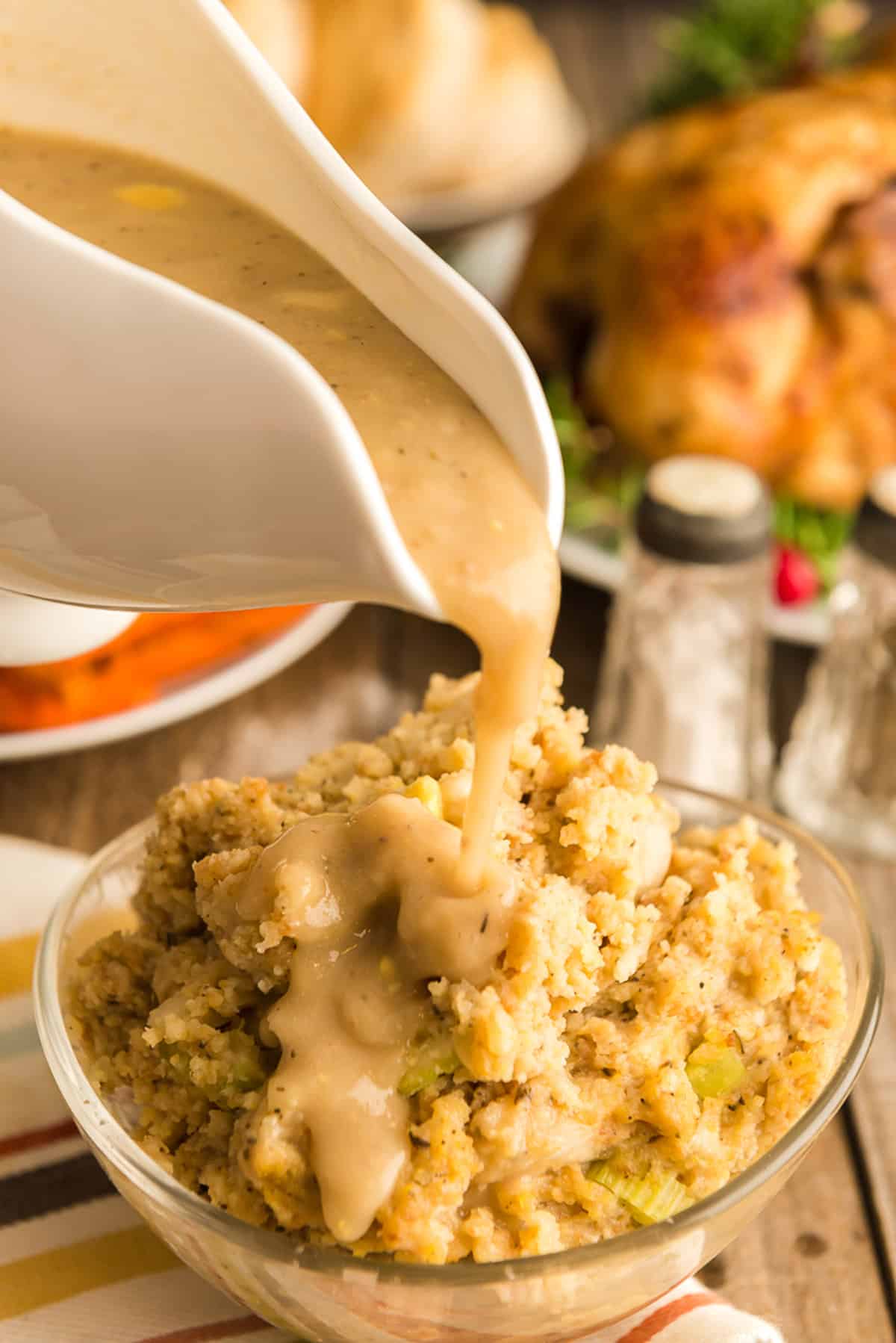
Whether you’re a home cook looking to perfect your tomato sauce or a chef aspiring to create the ideal consistency for pan sauces, mastering various thickening techniques can transform your dishes.
These kitchen tips for learning how to thicken stews and other sauces are what I have learned through years of experience. Today, I’ll show how to achieve a glossy texture and rich flavor and adapt these methods for food allergies and substitutions.
Table of Contents
- Why You Need to Use Thickeners
- How to Thicken Sauces and More
- How to Thicken Sauces with a Roux
- Use a Cornstarch Slurry
- Thicken Sauces by Reduction
- Egg Yolk Emulsions
- Use a Beurre Manié to Thicken Sauces
- How to Thicken Sauce with Tomato Paste
- Tapioca and Potato Starch
- Xanthan Gum to Thicken Sauce
- More Ways to Thicken Sauce
- Food Allergies and Substitutions for Thickeners
- How to Tell if Your Sauce is Thick Enough
- Why This is Important
- Thickening Agents Quick Guide
- Pro Tips
- How to Thicken Different Sauces
Why You Need to Use Thickeners
Knowing the best way to thicken gravy or sauce in one of those time-tested cooking nuggets that only experience can really teach you. This holds true for countless other kitchen tips and tricks, like the difference between a stalk of celery and a rib of celery, or maybe the best way to flour a cake pan.
Thickeners are vital in cooking to get the desired consistency in sauces and are critical for both flavor enhancement and visual appeal. Knowing how to thicken a sauce is useful for making soups, stews like Julia Child’s beef bourguignon, biscuits and gravy, chicken alfredo penne pasta and so much
A good sauce should not only taste great but also cling beautifully to your food. One of my favorite things about our rigatoni mac and cheese is how the cheese sauce clings to the rigatoni.
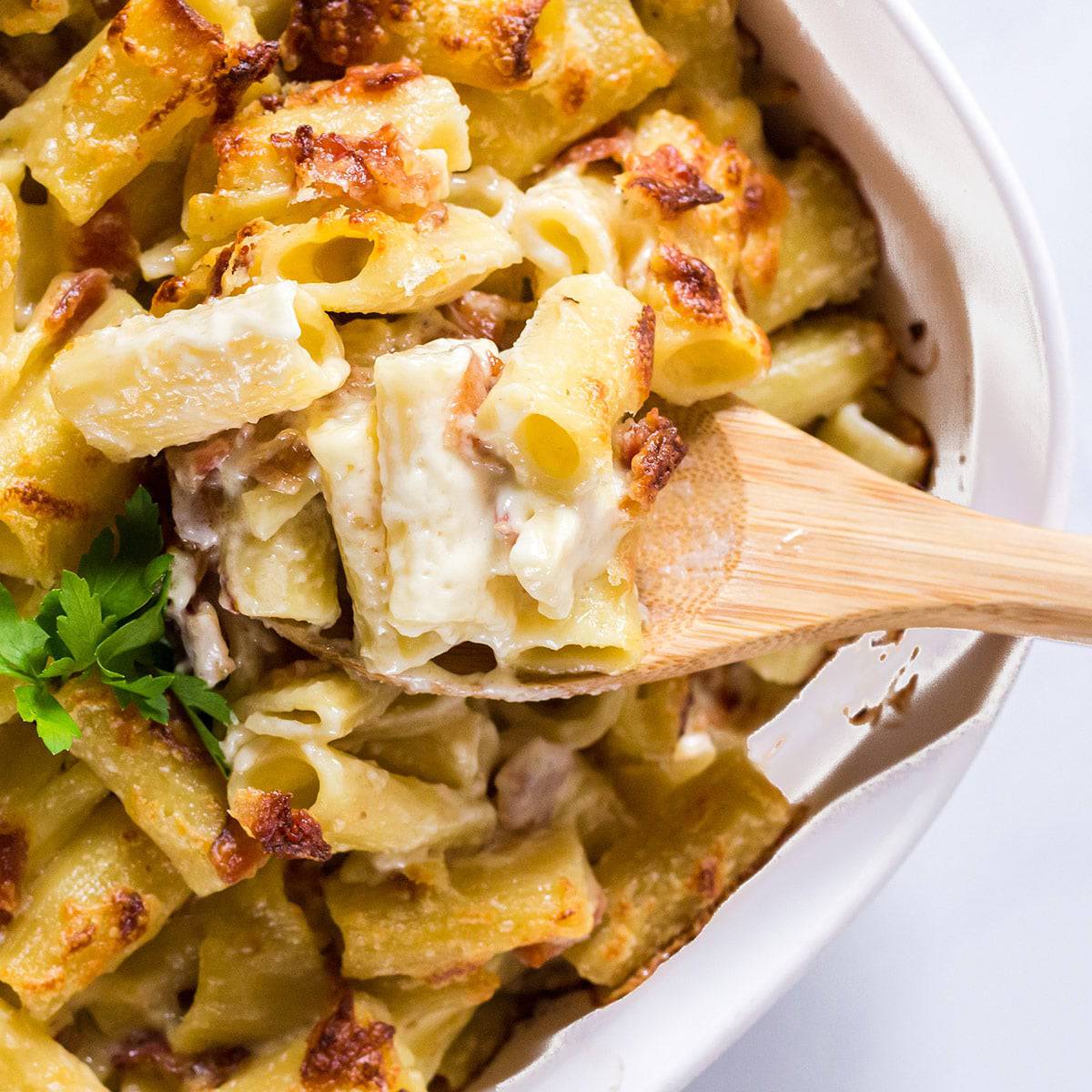
Thickeners also help to balance and intensify flavors, transforming a runny sauce into something sublime.
How to Thicken Sauces and More
Knowing how to thicken sauces, stews, and soups effectively is a key skill in cooking, especially for comfort foods.
There are many ways to make a thick sauce for home cooks and professional chefs alike. The best way to thicken a stew or sauce or soup depends on many factors.
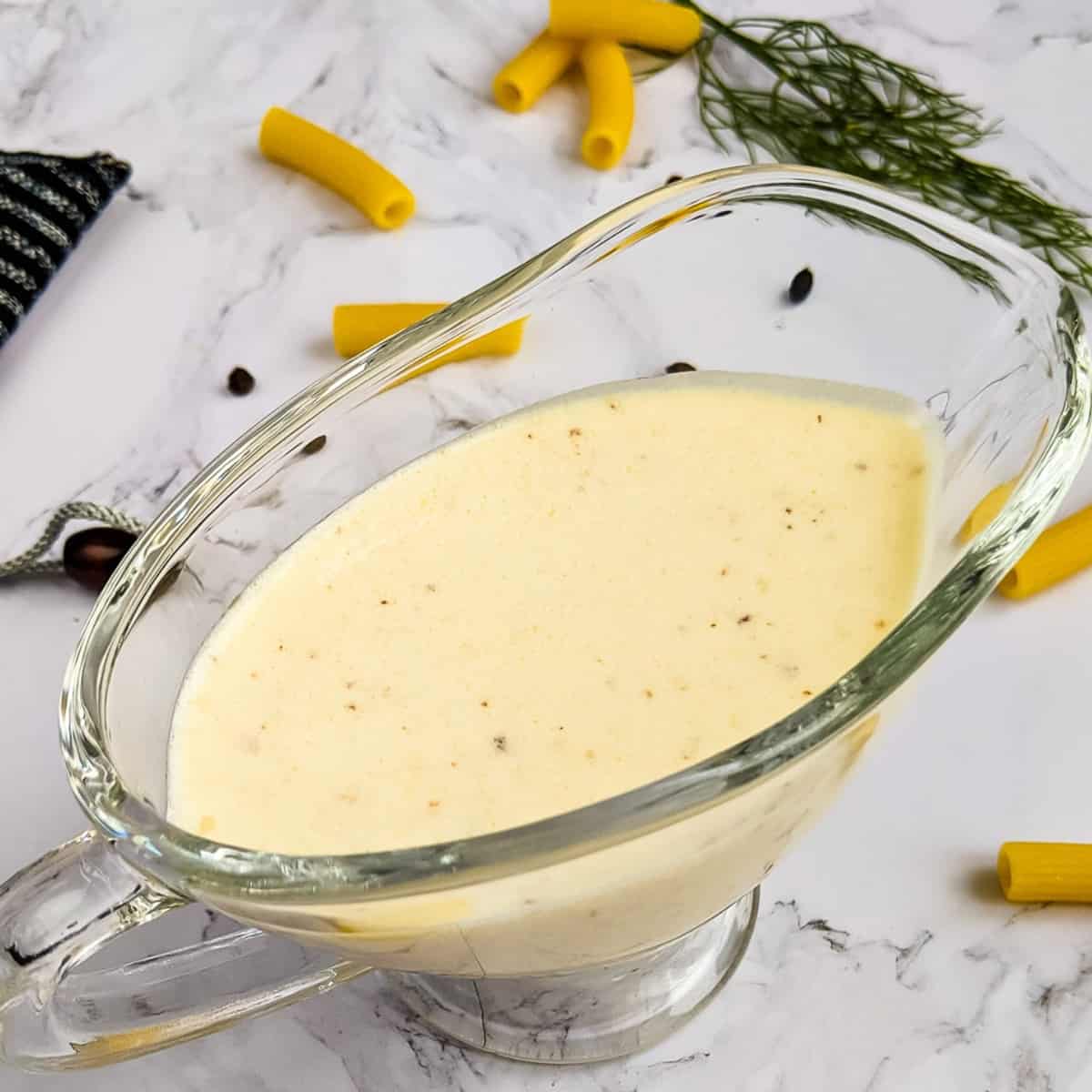
For creamier dishes like Alfredo sauce or homemade creamy soup recipes, a roux made from equal parts of flour and butter, known as beurre manié, creates a rich, thick paste.
Or, thickening agents such as xanthan gum offer an alternative thickening method. This might be particularly useful for those seeking gluten-free options or needing only a small amount to achieve the desired consistency.
How to Thicken Sauces with a Roux
Using a roux, made with equal parts of butter and all purpose flour, is a common way to thicken cream and milk-based sauces. Melt the butter, then gradually whisk in tablespoons of flour, cooking over medium heat to eliminate the raw flour taste.
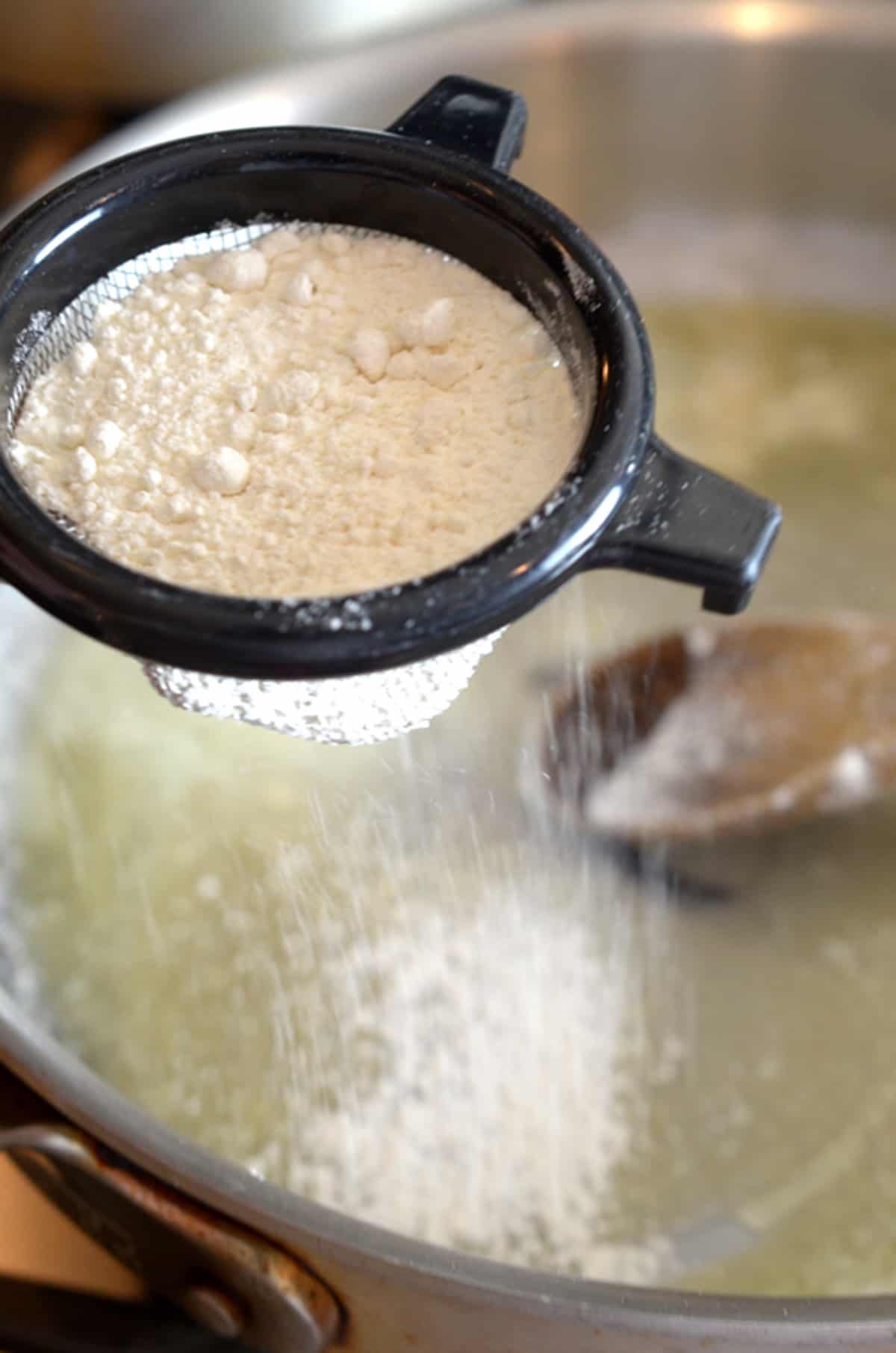
This method is also a good rule of thumb for making a thicker consistency for gravy, like in this giblet gravy, and other sauces.
Expert Cooking Tip
Use a small a hand-held fine mesh strainer to add flour as a thickener for sauces. Doing this allows you to stir the flour as it is added in small amounts and helps avoid clumpy gravy and sauces.
Use a Cornstarch Slurry
Mixing a tablespoon of cornstarch with an equal amount of cold water forms a slurry, an easy way to thicken sauces without altering their flavor.
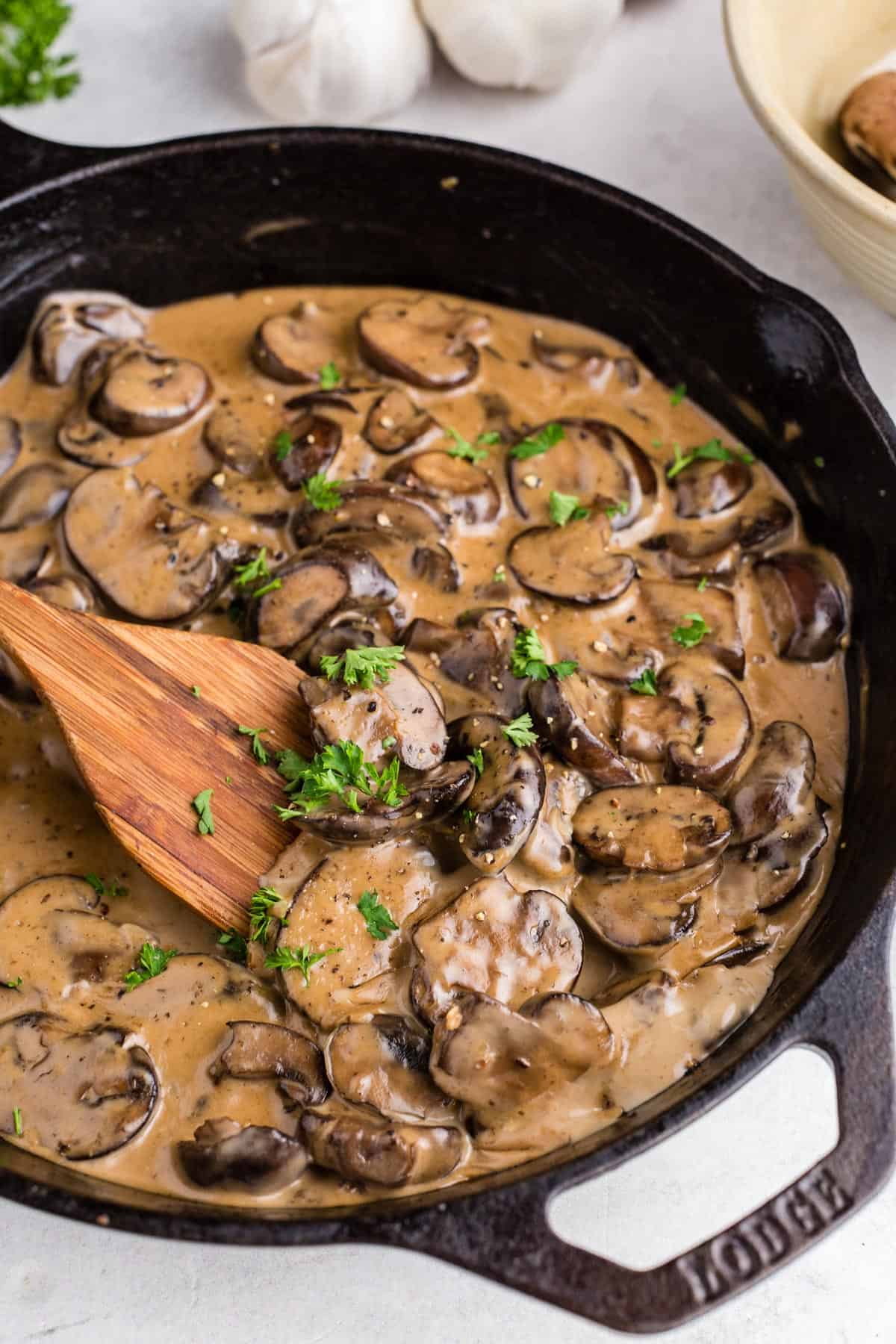
This method is best used towards the end of the cooking process because the cornstarch molecules lose their thickening ability under high heat. This is a common thickening agent and one of the better options for many sauces and gravy.
Thicken Sauces by Reduction
The reduction technique, where you simmer the sauce to evaporate excess water, is excellent for concentrating flavors and reducing water content, ideal for wine-based sauces like those with white wine or tomato sauces.

We use the reduction technique to thicken stews like our easy braised beef with red wine.
Egg Yolk Emulsions
Egg yolks add richness to sauces, making them a better option for pasta and dairy-based sauces. Temper the yolks with a small amount of the hot sauce before incorporating them back into the rest of the sauce to avoid curdling.
Use a Beurre Manié to Thicken Sauces
Beurre manié, a mixture of equal parts butter and flour, can be whisked into hot liquid to thicken sauces without creating lumps. Knowing how to use beurre manie works wonders for pan sauces and gravies.
Make-Ahead Thickeners
Beurre manié can be poured into an ice cube tray, frozen, and then used at some point later when you want to use some for making a thicker sauce.
How to Thicken Sauce with Tomato Paste
Due to its concentrated flavor and low water content, tomato paste is perfect for moist heat method recipes like beef stews, pasta sauces, and tomato-based sauces.
Expert Cooking Tip
If you’re going to add tomato paste to thicken a stew or sauce, brown it over medium heat first. This will help caramelize the tomato paste and add extra flavor to the base of your stew or sauce.
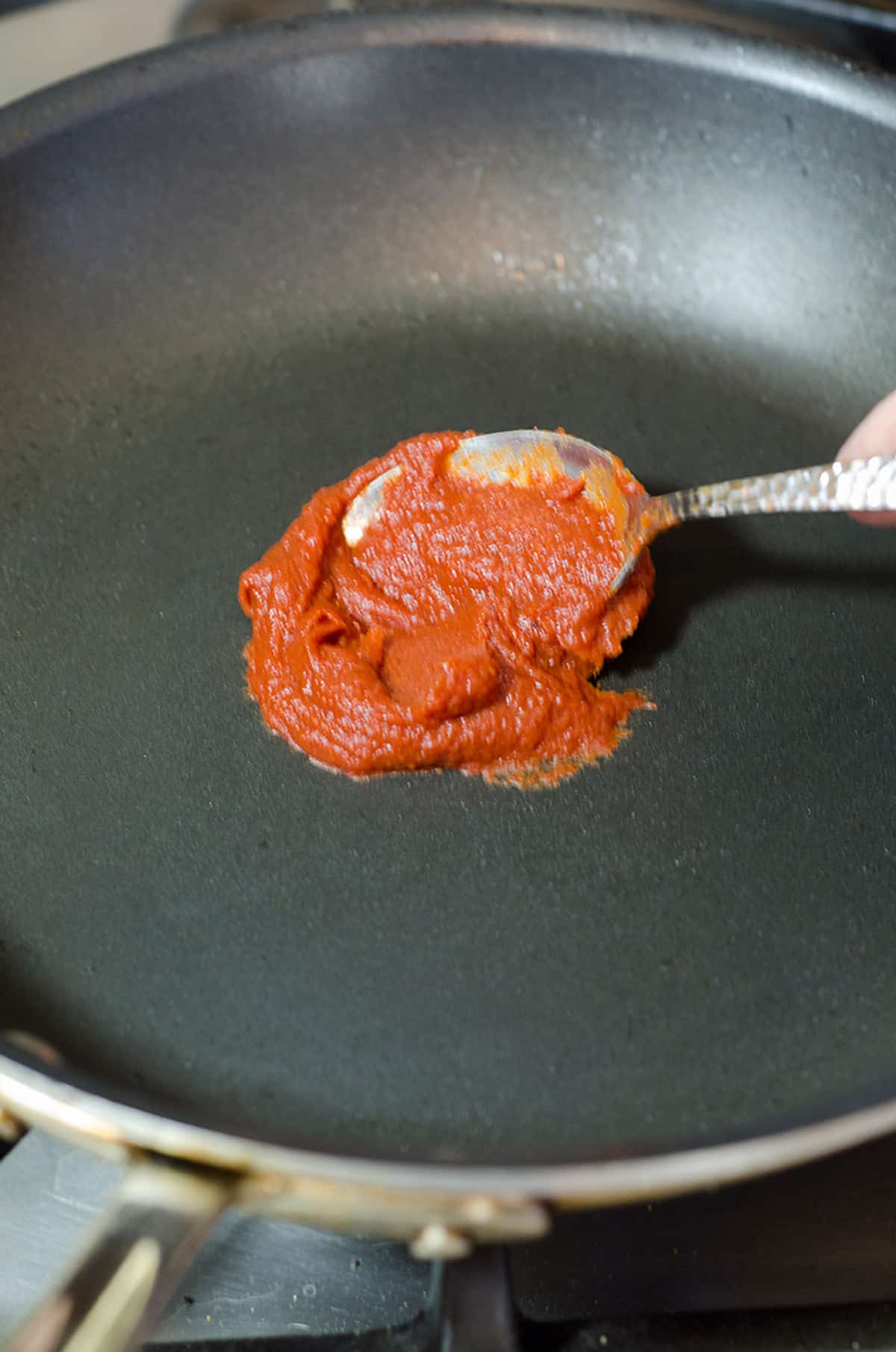
Tapioca and Potato Starch
Tapioca and potato starch are excellent gluten-free alternatives. They work well in acidic sauces and dishes that require freezing. Here are some recipes that use tapioca starch.
Want to Save This Recipe, Friend?
Xanthan Gum to Thicken Sauce
Xanthan gum is a powerful thickener and stabilizer, ideal for gluten-free and low-carb cooking, especially in salad dressings and sauces. Here is a good guide for how to use xanthan gum.
More Ways to Thicken Sauce
- Lemon Juice or Vinegar: Adding acidity can sometimes help thicken sauces, such as soy sauce or sweet sauces, by breaking down some of the starch molecules.
- Simmering: Sometimes, simply simmering the sauce on low heat for extra minutes can help achieve the right thickness.
Food Allergies and Substitutions for Thickeners
For those with gluten sensitivities, cornstarch, tapioca starch, or a gluten-free gravy thickener are ideal thickeners. These can be used in equal amounts to flour, following the general rule of thumb for substitutions.
For dairy allergies, using chicken stock as a base and thickening with cornstarch or a flour substitute like rice flour can be an excellent option.
How to Tell if Your Sauce is Thick Enough
Getting sauce thickness just right will make your cooking taste better. It’s all about getting that perfect feel and flavor in every meal. This skill can really turn ordinary recipes like bbq sauce or gravy into something special.
- Spoon Test: The easiest way to check the consistency of the sauce is the spoon test. Dip a spoon into your sauce – if it’s a cup of sauce or much more – and see if the sauce coats the back of the spoon evenly. If the sauce sticks to the back of a spoon without dripping off quickly, it indicates that your sauce has thickened appropriately and is not a watery sauce or runny gravy.
- Thickness upon Cooling: Often, sauces thicken as they cool. After adding thickening agents like a tablespoon of cornstarch mixed with a little bit of liquid or xantham gum, remove a small amount of sauce and let it cool for a few minutes. The consistency it reaches upon cooling is a good indicator of how thick your sauce will be once it’s off the heat.
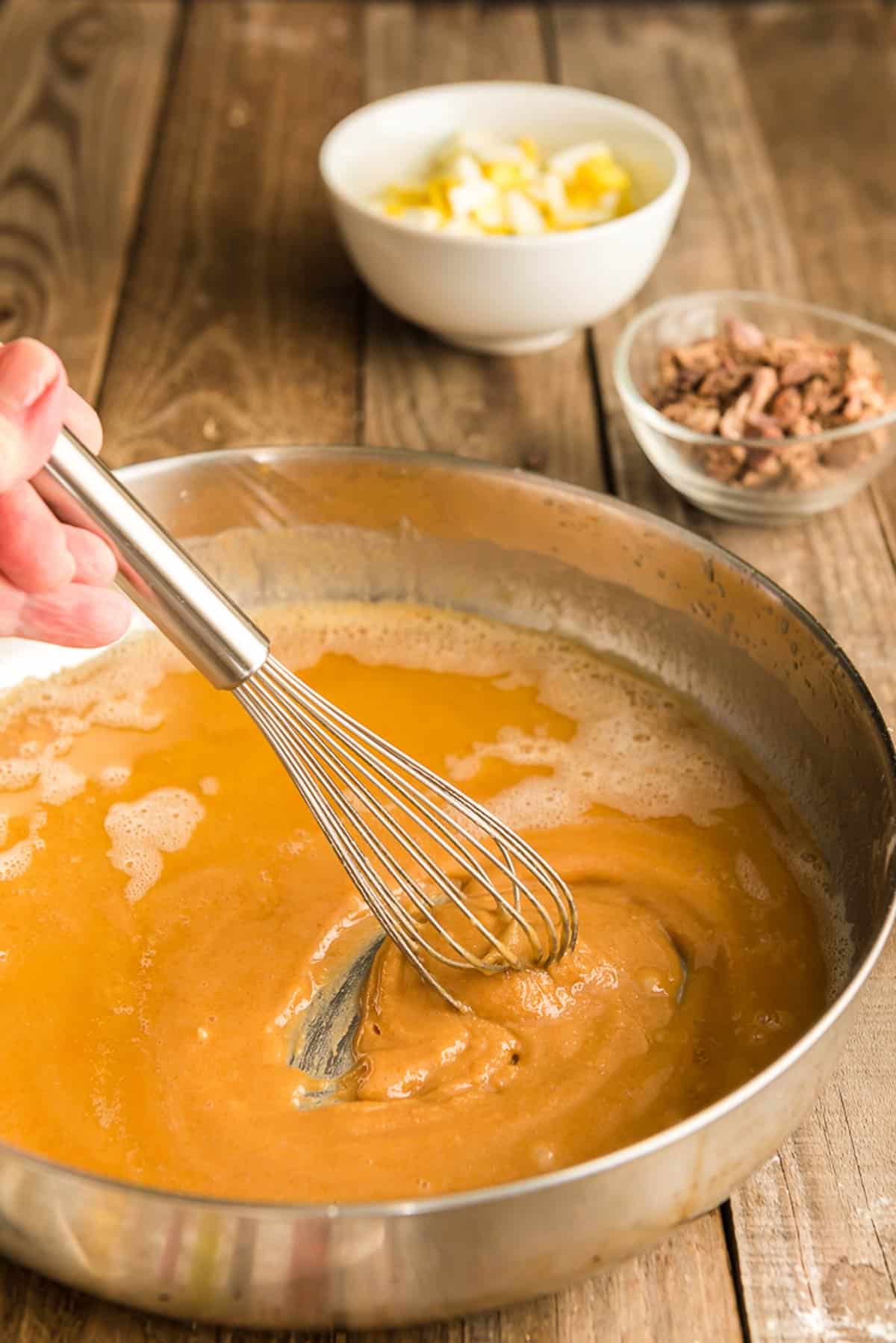
- Consistency While Stirring: Pay attention to the feel of the sauce as you stir it. If you’ve added extra ingredients like equal amounts of flour or used chicken stock as a base, notice the resistance against your stirring utensil. A sauce that’s thick enough should offer some resistance and appear visibly thicker than a thin sauce, almost like a way rice pudding holds together rather than a liquid
Why This is Important
Thickening sauces is a fundamental skill for creating sumptuous and satisfying dishes. From ensuring your pasta sauce has the perfect consistency to adding extra richness to your cream sauces, these techniques are straightforward yet impactful.
Thickening Agents Quick Guide
| Thickening Agents for Sauces | Best Use |
| Roux (Butter + Flour) | Creamy sauces, gravies, soups |
| Cornstarch Slurry | Clear sauces, stir-fries, gravies |
| Arrowroot Slurry | Gluten-free sauces, fruit sauces |
| Reduction | Concentrating flavors in soups & sauces |
| Egg Yolk Emulsion | Hollandaise, custards, creamy sauces |
| Pureed Vegetables | Thickening soups & stews naturally |
| Gelatin | Jellies, desserts, aspic |
| Butter (Beurre Manié) | Velvety finish in sauces & gravies |
| Tapioca or Potato Starch | Gluten-free baking, soups, stews |
| Xanthan Gum | Dressings, sauces, gluten-free thickening |
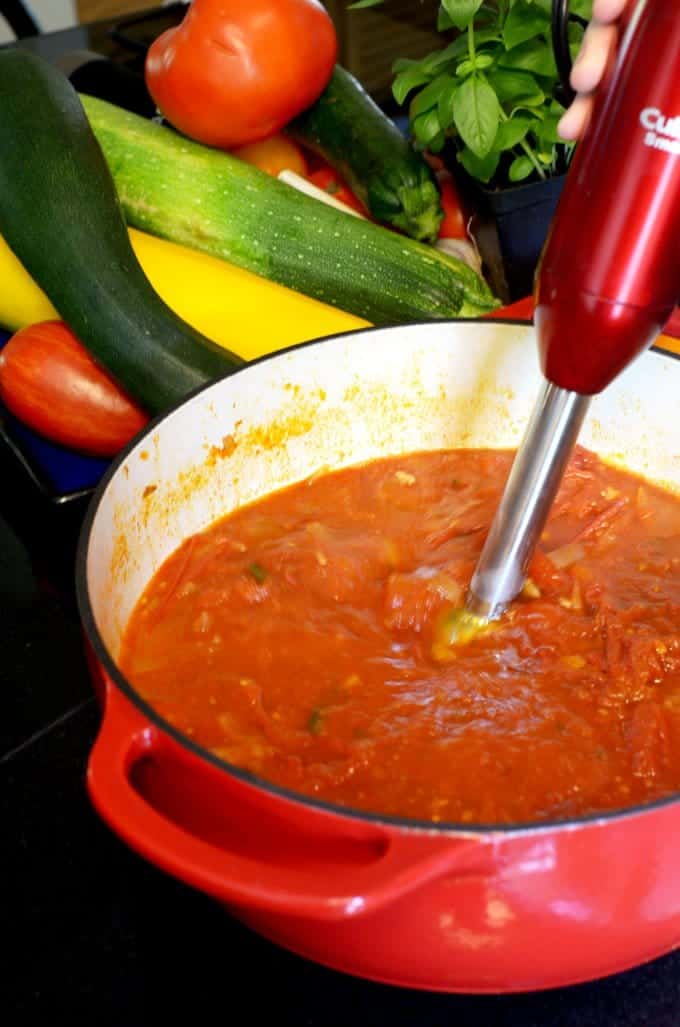
Pro Tips
🔥 Pro Tips:
✔ Always dissolve starches in cold liquid before adding to hot dishes.
✔ Whisk constantly when adding thickeners to prevent lumps.
✔ Reductions work best when simmered low and slow for deep flavor.
How to Thicken Different Sauces
What type of sauce are you trying to thicken? Here are a few tailored recommendations based on common sauces:
- Gravy (e.g., turkey or beef gravy)
- Best Thickening Method: Roux (flour + fat) or slurry (cornstarch + water).
- How To: If your gravy is too thin, whisk in a cornstarch slurry (1 tablespoon cornstarch + 2 tablespoons cold water) or make a quick roux by mixing equal parts flour and butter and stirring it in.
- Pasta Sauce (e.g., marinara, Alfredo, cheese sauce)
- Best Thickening Method: Reduction (simmering), heavy cream, or cheese.
- How To: Let the sauce simmer longer to evaporate excess liquid. For cream-based sauces, add heavy cream or grated Parmesan for extra thickness.
- Take a look at the best way to reheat alfredo sauce.
- Asian Stir-Fry Sauce (e.g., teriyaki, soy-based sauces)
- Best Thickening Method: Cornstarch slurry.
- How To: Mix 1 tablespoon cornstarch with 2 tablespoons water and stir it into the simmering sauce for a glossy, thick texture.
- Soup or Stew (e.g., chowder, beef stew, chili)
- Best Thickening Method: Mashed/puréed vegetables, reduction, or a flour slurry.
- How To: Blend a portion of the soup/stew or stir in mashed potatoes or beans for natural thickness.
- BBQ Sauce
- Best Thickening Method: Reduction, cornstarch slurry, or tomato paste.
- How To: Simmer the sauce uncovered or stir in a cornstarch slurry or a spoonful of tomato paste to help thicken it.
- Custard or Pudding (e.g., vanilla custard, chocolate pudding)
- Best Thickening Method: Egg yolks and cornstarch.
- How To: Whisk egg yolks with sugar and cornstarch, then temper with warm liquid before cooking until thickened.
Experiment with different methods and ingredients to discover what works best for your culinary creations. Check out additional tips at the bottom of the page for more insights and techniques. Happy cooking!
👨🍳 Tried this Recipe? Please leave a ⭐⭐⭐⭐⭐ rating in the recipe card below and leave a comment. We love hearing from our readers!
⏩ Stay in touch with us on social media by following us on Facebook, Pinterest, Instagram, and YouTube!
📬Get our Recipes delivered to your inbox for FREE!












i find that wondra flour is good for thinking sauces i use it for my stew meat
HOW TO MAKE SAUCE STICK TO SPAGHETTI/PASTA?